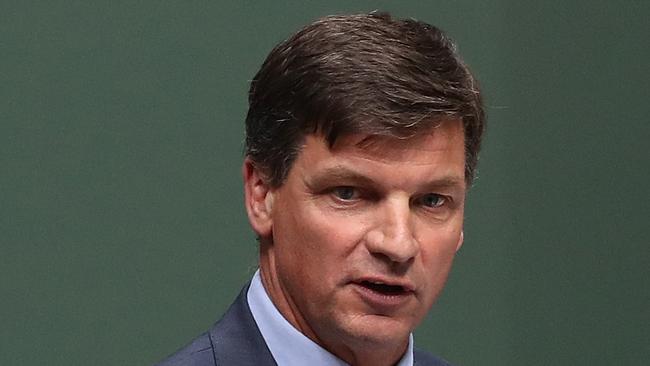Gas reform closer with reservation scheme
The Morrison government will consider setting up a national scheme to remove ‘unwarranted restrictions’ on gas developments.

A national gas reservation scheme could be established to boost domestic stocks and drive down energy prices, as part of sweeping measures aimed at opening new investment in gas supplies.
With Victoria and NSW holding back on opening major gas reserves, the Morrison government will consider setting up a national scheme to remove “unwarranted restrictions on gas developments” in the states and territories.
Josh Frydenberg, Resources Minister Matt Canavan and Energy Minister Angus Taylor will announce today that the government is bringing forward a review of the Australian Domestic Gas Security Mechanism, will implement a “comprehensive review” of pipeline regulation, and extend the consumer watchdog’s role in monitoring and publishing gas market data until December 2025.
The gas reforms, which were discussed with the Centre Alliance in the lead-up to winning the minor party’s support for the Coalition’s income tax cuts package, come a week after Scott Morrison urged state governments to lift bans on gas exploration, saying he wanted to take “the pressure off” energy prices.
Senator Canavan said “price and supply are inextricably linked” and “more exploration and production” was crucial to ensure households and heavy energy users were given power price relief.
As part of the government’s new gas measures, it will also consider the “feasibility of establishing mechanisms to facilitate collective bargaining and improve the negotiating position of large industrial users for gas supply”.
Senator Canavan said state and territory governments had “for too long” shelved onshore gas exploration for “political purposes”, and “the price we’ve paid is restricted supply and price creep”.
He said as the world’s largest liquefied natural gas exporter, with gas exports growing by 22 per cent to 70 million tonnes between 2017 and last year and on a trajectory to hit 81 million tonnes by 2020-21, “we must be able to reliably and affordably harness gas to grow our own industries and create more Australian jobs”.
Mr Taylor said the new measures would deliver a “comprehensive plan across the gas supply chain, which deals with production, prices and market transparency”.
Encouraging state and territory governments to cut the impasse and open up gas development, Mr Taylor urged them to work with the Morrison government to “consider a national gas reservation scheme” and further Council of Australian Government-driven gas market reform.
While a final decision on a national gas reservation scheme would likely not be made until February 2021, the government would consider developing its own policies if an agreement could not be reached with the states.
Since the Coalition first outlined measures to protect domestic gas supplies in early 2017, the spot price of gas in eastern Australia has fallen by more than 25 per cent, with gas contract offers falling by up to half. The Australian understands the reforms could see the domestic gas security mechanism overhauled to more closely monitor gas price signals, including international comparisons.
Centre Alliance senator Rex Patrick, who met with Senator Canavan following the election to discuss what else could be done to drive down gas prices, told The Australian he was confident these new reforms would “put downward pressure on gas prices both in the short term and long term”.
“This is good news for consumers, be they people on Newstart, working Australians, pensioners, small businesses and large businesses,” Senator Patrick said.
Users in the southeastern states are still paying up to three times historical prices of $3-$4 a gigajoule, with prices between $10 to $12 a gigajoule due to a lack of new supplies and domestic gas being scooped up for export from Queensland.
LNG netback prices — which measure export prices minus the cost of freezing the gas to LNG and shipping it to international buyers — have more than halved since the start of the year, reflecting tepid Asian demand and a raft of new supplies in the market. But that falling price has yet to translate into a tariff that local users can expect to pay, given the high costs of extracting gas in the Australian market along with pipeline costs and the relatively small number of producers offering deals.
The competition regulator publishes the netback price to give big gas users added transparency and a ballpark of what they should be paying for domestic supplies.
However, the pricing methodology has been criticised for failing to account for transport costs and margins added in to supplies, meaning a large gap between local and LNG netback prices still exists.



To join the conversation, please log in. Don't have an account? Register
Join the conversation, you are commenting as Logout